These crusty sourdough European-style rolls are a true delight for any bread lover, celebrated for their irresistible contrast of textures and deep, hearty flavors. These rolls boast a firm, golden-brown crust that cracks under the slightest pressure, giving way to a soft, airy interior that offers a slight chew.
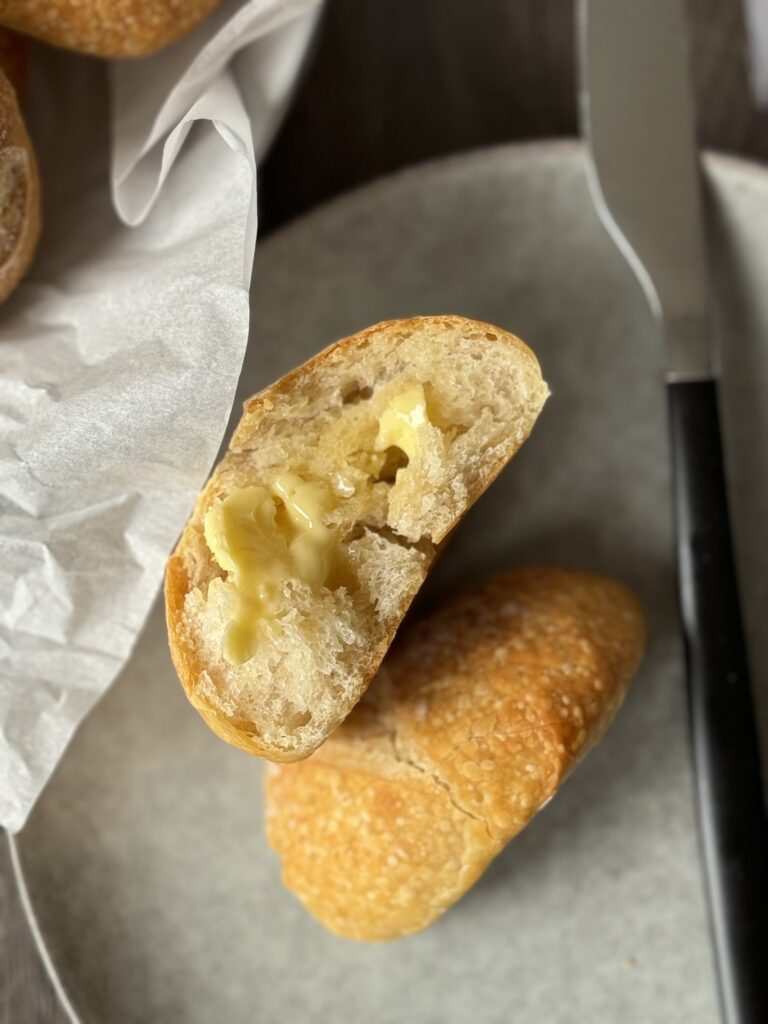
The initial crunch of the crust, followed by the tender, pillowy crumb that perfectly absorbs the flavors of any accompanying dish. Whether paired with a rich stew, used to scoop up savory sauces, or enjoyed simply with a pat of creamy butter, these rolls bring a rustic, satisfying touch to any meal.
The nuanced, slightly tangy taste from long fermentation processes adds complexity, making them not just a staple, but a beloved part of European culinary tradition.
4 ways to enjoy crusty sourdough rolls
- Top with butter & jam
- As a sandwich base
- Dipped in Olive Oil and Balsamic Vinegar
- Served with Soup or Stew
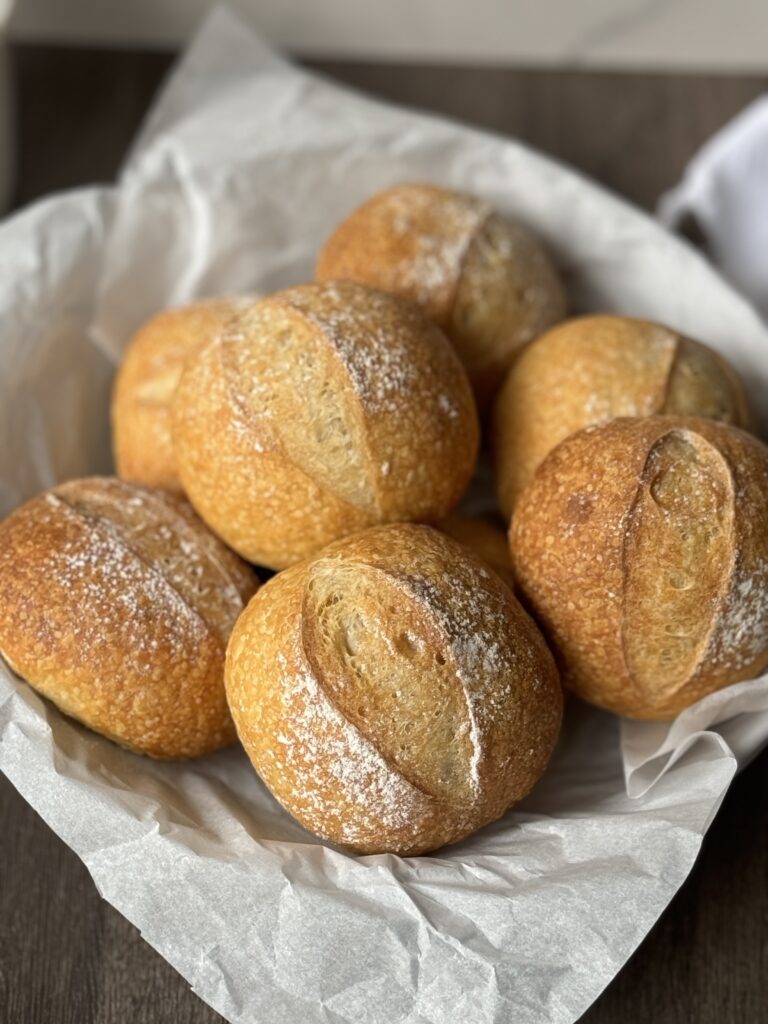
Why I love this recipe
- Crusty sourdough rolls are 100% sourdough making them easier to digest and a healthier option.
- These rolls are done by hand; no fancy equipment is needed!
- The recipe itself is very versatile. The rolls can be made into 4-6 larger rolls for hamburgers, sandwiches, etc. Feel free to double the recipe and freeze a batch as well!
- The long fermentation process gives crusty sourdough rolls a deep, complex flavor. The balance of crunchy and soft is lovely.
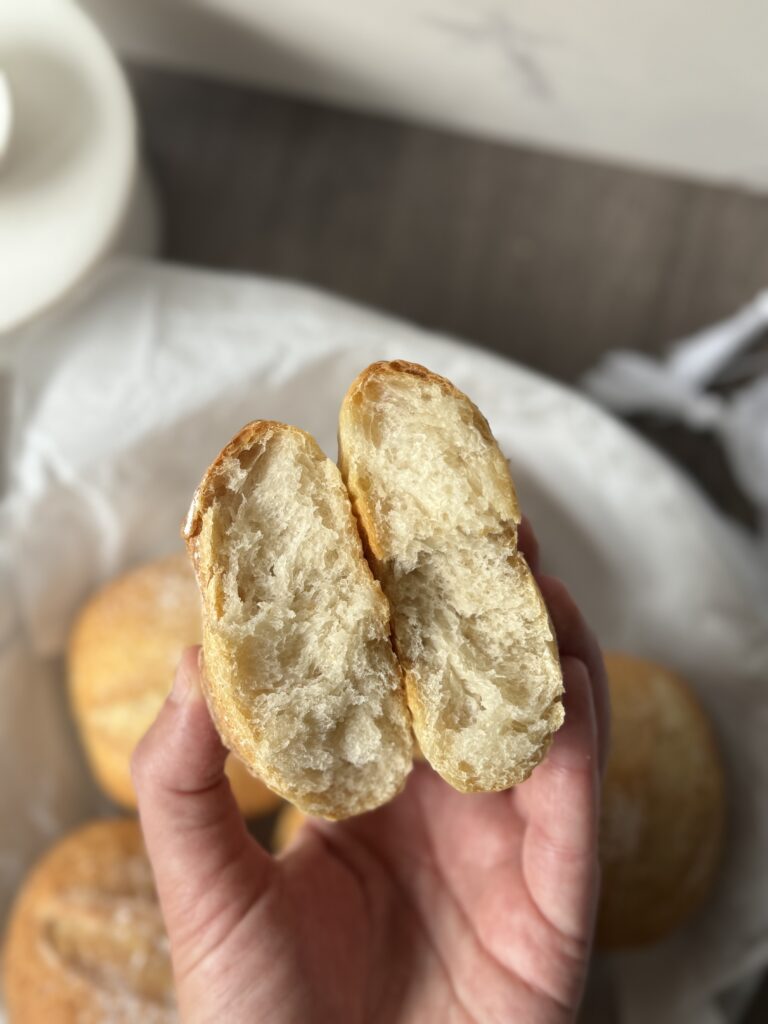
How to make crusty sourdough rolls
Baker’s schedule: Mix the dough in the morning and allow it to ferment for 6-9 hours (or until doubled). Shape the rolls and refrigerate overnight. The following morning allow the rolls to rise for 3-4 hours and bake.
Sourdough starter: Ensure your sourdough starter has been fed and is at its peak before mixing the dough.
Fermentation temperatures: The dough takes about 6-7 hours to double in size at 70 degrees F. Keep in mind if the temperature is higher or lower in your environment, adjustments may need to be made. Watch the dough; not the clock.
Ingredients
- 360 grams of bread flour
- 215 grams water
- 80 grams sourdough starter (recently fed, active & bubbly)
- 9 grams salt
- 14 grams of olive oil
Equipment
- Mixing bowl
- Food scale
- Parchment paper
- Large baking sheet
- Dough scraper
Mix the dough
- In a mixing bowl add the starter and water and mix until the starter is dissolved.
- Next, add the flour, salt, and olive oil, and mix until the flour has absorbed the water.
- Once there are no more flour clumps, cover the dough with plastic wrap or a damp towel and allow it to rest for 30-45 minutes.
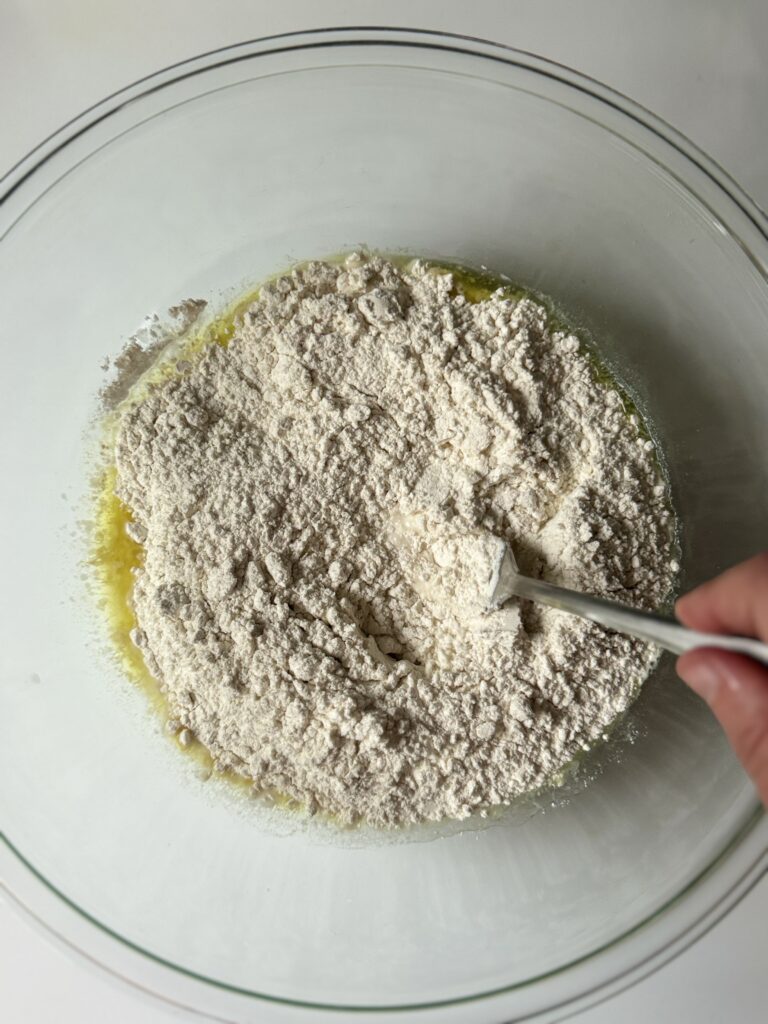
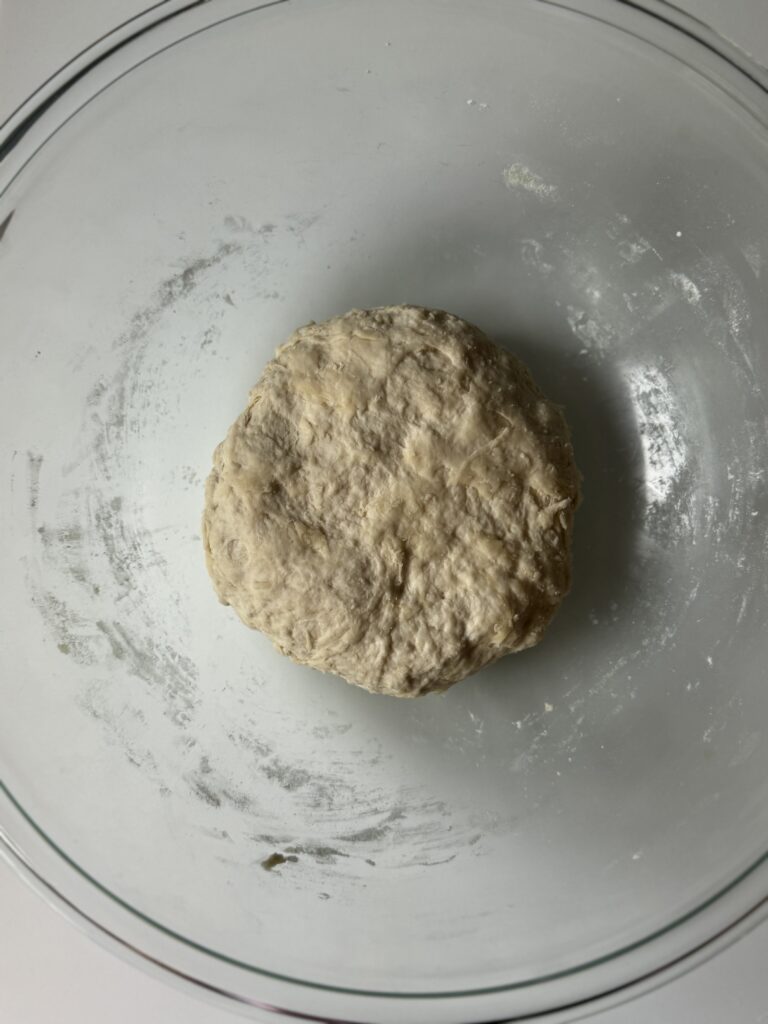
Strengthen the dough
- After the dough has rested, work the dough into a ball by folding it into itself repetitively (about 3 minutes). The dough should feel stronger after this.
If the dough starts to tear at any point, cover it and let it rest.
- Once the dough is smoother, cover it and allow it to rest for 45 minutes.
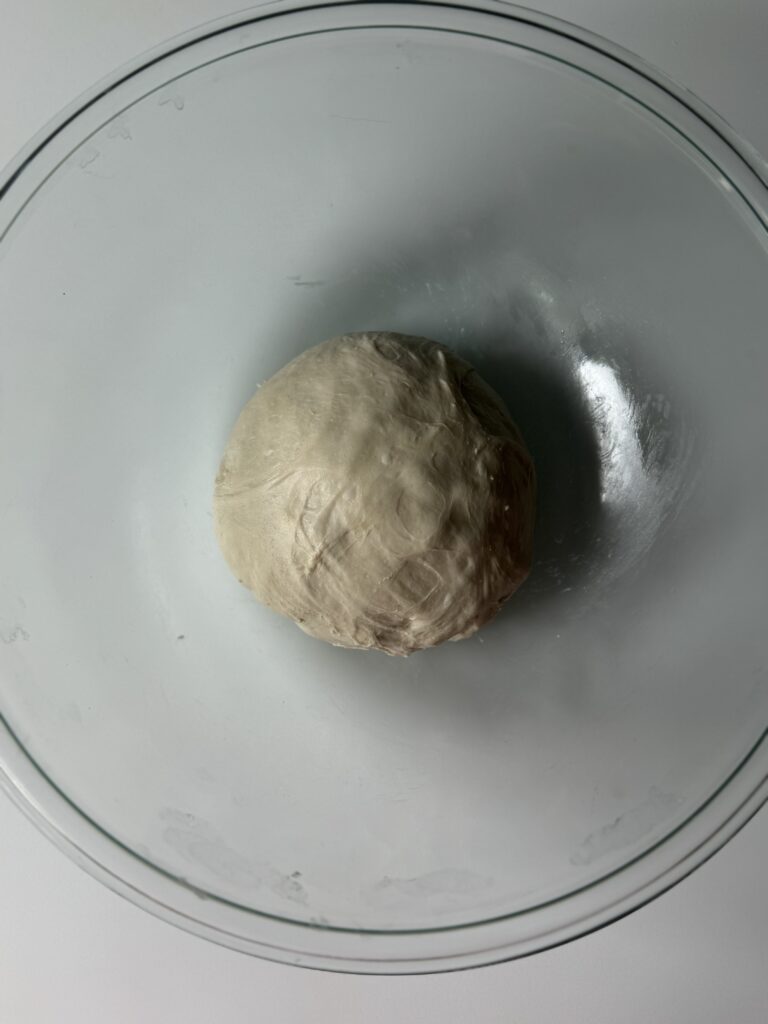
Stretch & folds
Because the dough is lower in hydration, it does better with stretch and folds vs. coil folds.
- Once the dough has rested, perform 3 stretch and folds in 45-minute increments.
- After this has been completed, keep the dough covered for the remainder of the bulk fermentation (about 3-4 more hours).
Shape & Refrigerate
- The dough is ready to be shaped once it has doubled in size (or more).
- Line a large baking sheet with parchment paper and spray some non-stick oil on it.
- Using a food scale, divide the dough into 8 equal portions (weighing around 80 grams each) and shape them into balls.
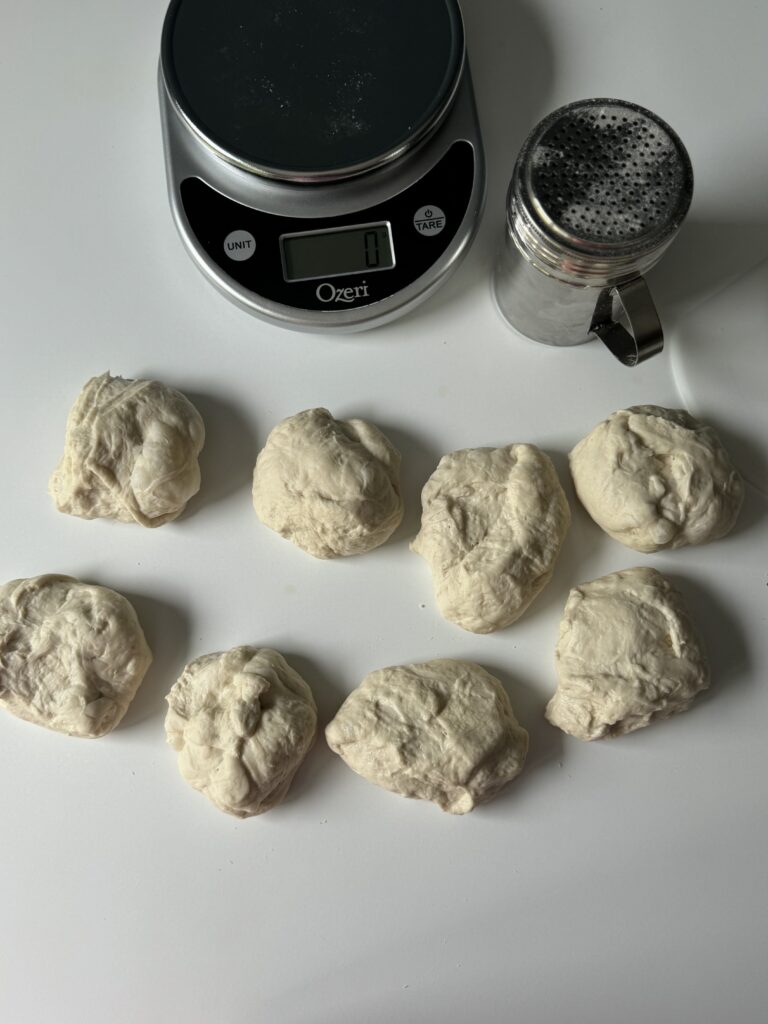
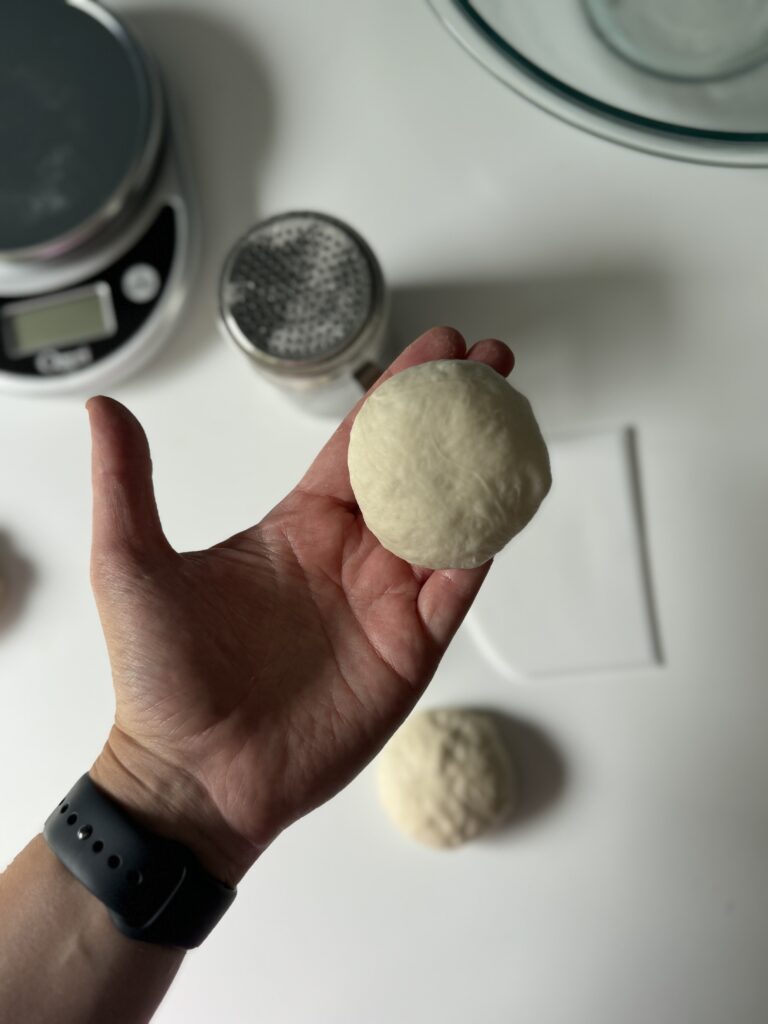
- Place each dough ball onto the parchment paper and using both hands, gently shape the dough to form an oval shape (this is optional, but gives the rolls that classic appearance).
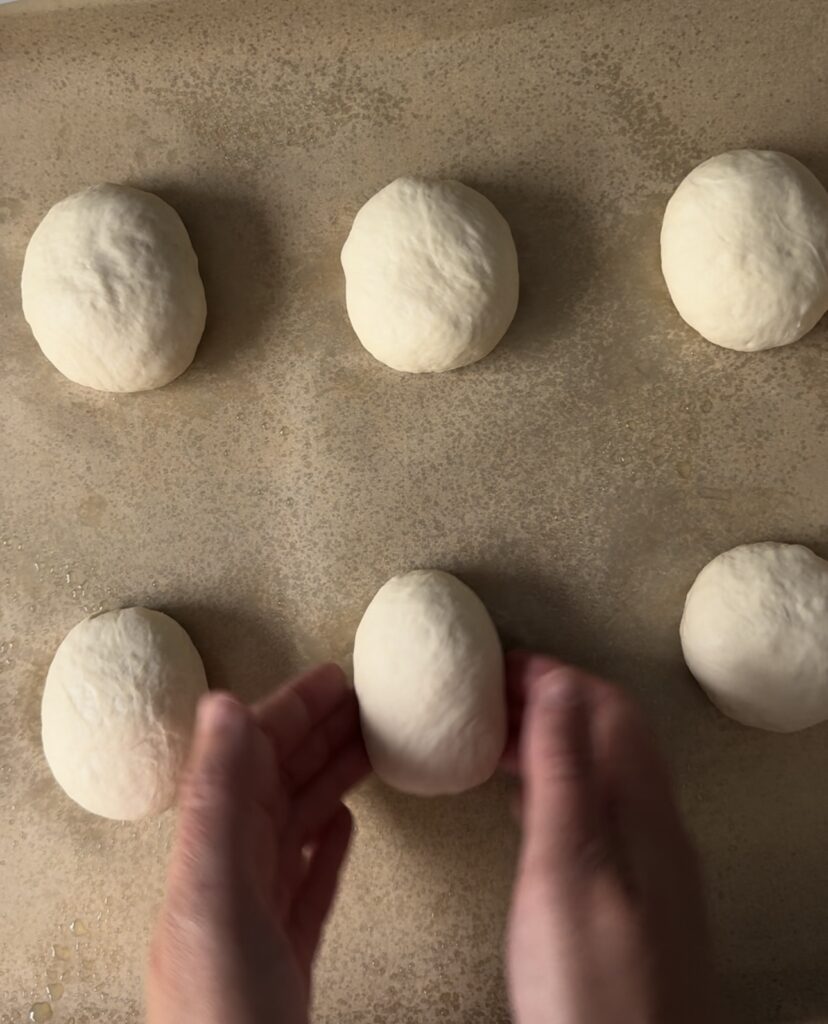
- Cover the dough with oiled plastic wrap and place into the refrigerator overnight.
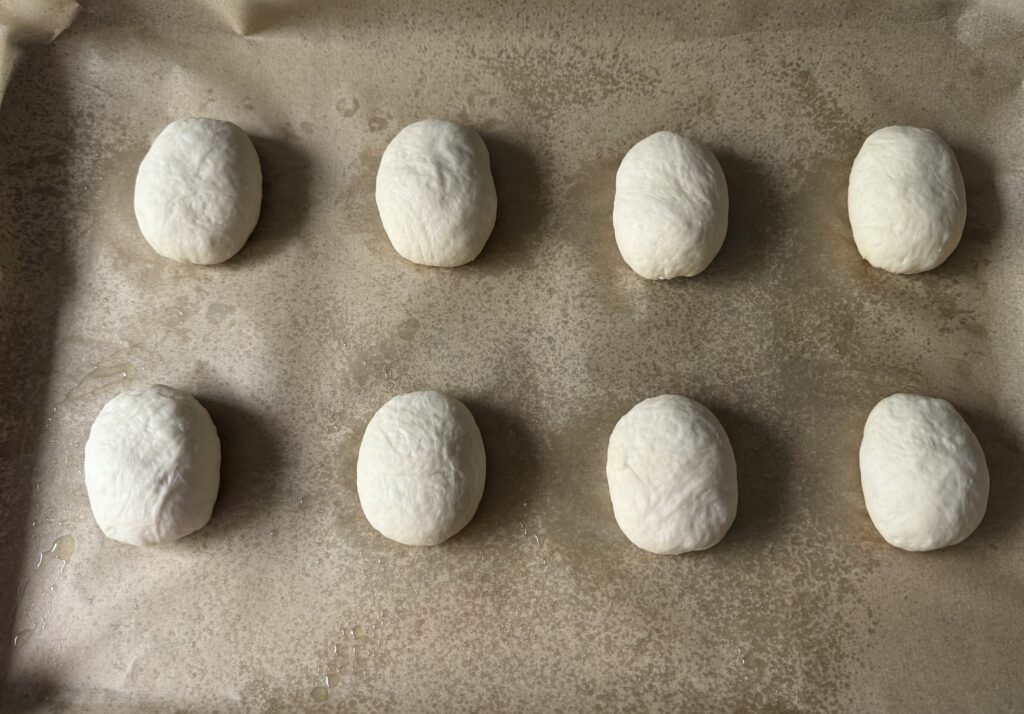
Second rise & bake
- The following morning remove the rolls from the refrigerator and allow them to rise in a warm spot (this can take 3-5 hours depending on the temperature). Mine took 4 hours at 70 degrees F.
- The rolls are ready once they have at least doubled in size.
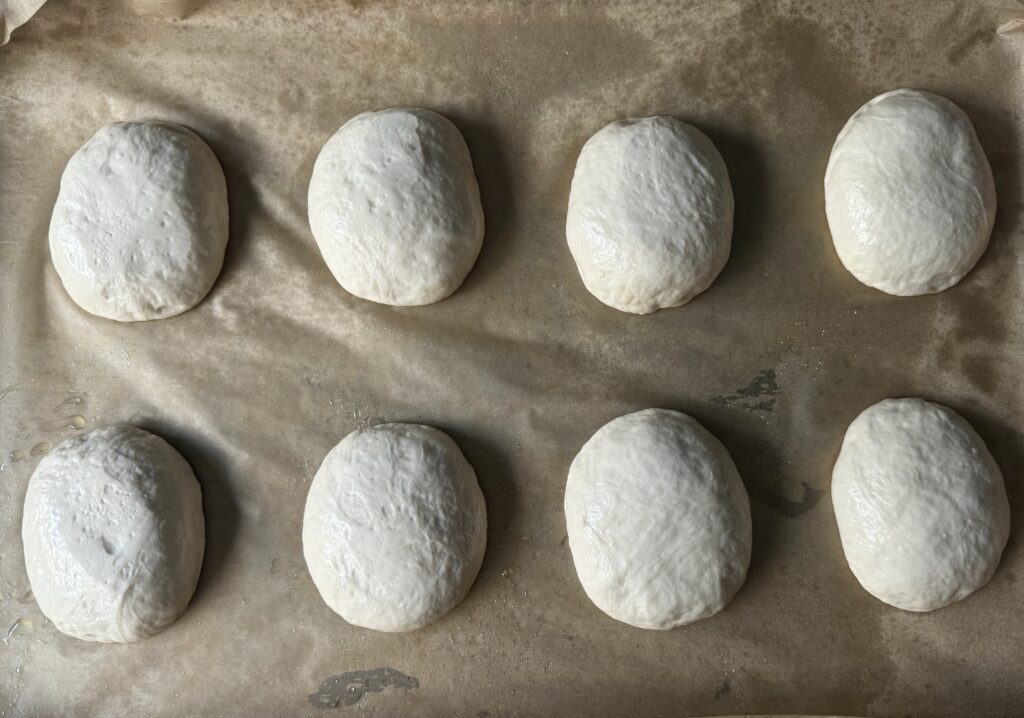
- After the rolls have finished their second rise, place them back into the refrigerator before scoring for 10-15 minutes (this will make them firmer and easier to score) and preheat the oven to 425 degrees F.
- Using a sharp razor, make one single slash down the middle of each roll.
Optional: sift a little flour over each roll (this is more for appearance).

- Place the crusty sourdough rolls into the oven with a tray or cast iron pan below them with a few ice cubes. This will create steam and give the rolls that notable brown, crunchy crust.
- Bake the rolls for 25-28 minutes or until they reach your desired crispiness. They should be a deep golden brown.

- Crusty sourdough rolls last for 2-3 days in an airtight container or bread bag of your choice.
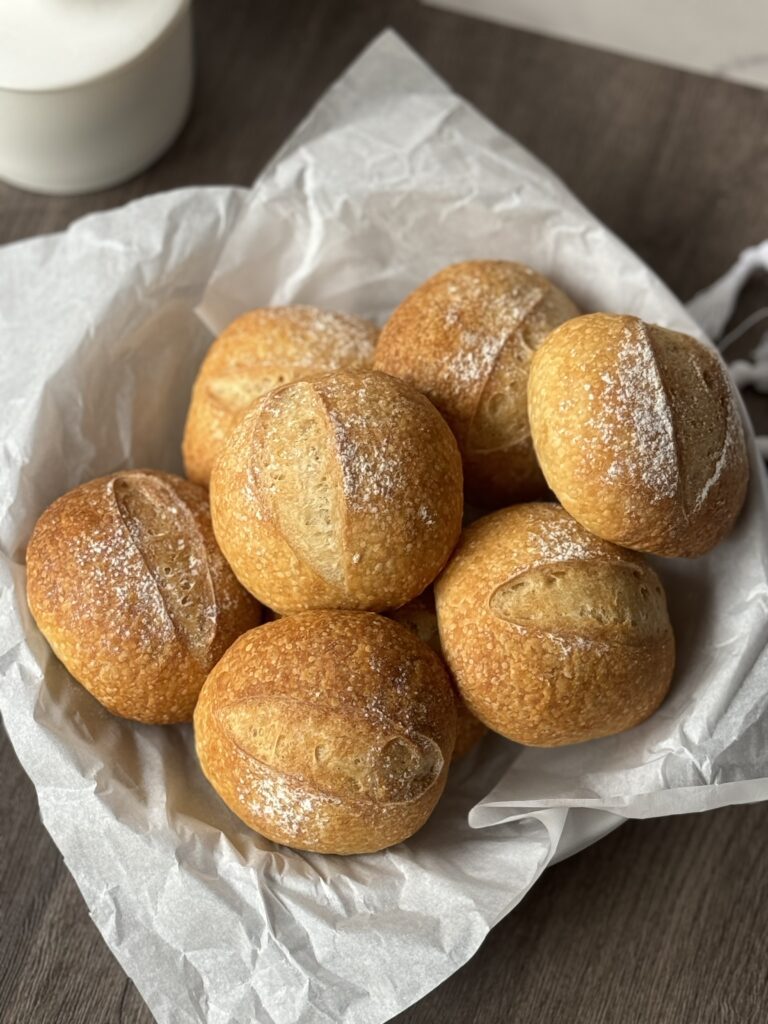
More sourdough recipes
- Soft Sourdough Dinner Rolls
- Sourdough Biscuits (so buttery & soft!)
- Sourdough Hoagie Rolls [Sourdough Sandwich Rolls]
- Sourdough Cinnamon Rolls (soft & not too sweet!)
Crusty Sourdough Rolls (European style)
Equipment
- Mixing bowl
- Food scale
- Parchment paper
- Large baking sheet
- Dough scraper
Ingredients
- 360 grams bread flour
- 215 grams water
- 80 grams sourdough starter recently fed, active, and bubbly
- 9 grams salt
- 14 grams olive oil
Instructions
- Mix the dough
- In a mixing bowl add the starter and water and mix until the starter is dissolved.
- Next, add the flour, salt, and olive oil, and mix until the flour has absorbed the water.
- Once there are no more flour clumps, cover the dough with plastic wrap or a damp towel and allow it to rest for 30-45 minutes.
Strengthen the dough
- After the dough has rested, work the dough into a ball by folding it into itself repetitively (about 3 minutes). The dough should feel stronger after this. If the dough starts to tear at any point, cover it and let it rest.
- Once the dough is smoother, cover it and allow it to rest for 45 minutes.
Stretch & folds
- Because the dough is lower in hydration, it does better with stretch and folds vs. coil folds.
- Once the dough has rested, perform 3 stretch and folds in 45-minute increments.
- After this has been completed, keep the dough covered for the remainder of the bulk fermentation (about 3-4 more hours).
Shape & Refrigerate
- The dough is ready to be shaped once it has doubled in size (or more).
- Line a large baking sheet with parchment paper and spray some non-stick oil on it.
- Using a food scale, divide the dough into 8 equal portions (weighing around 80 grams each) and shape them into balls.
- Place each dough ball onto the parchment paper and using both hands, gently shape the dough to form an oval shape (this is optional, but gives the rolls that classic appearance).
- Cover the dough with oiled plastic wrap and place into the refrigerator overnight.
Second rise & bake
- The following morning remove the rolls from the refrigerator and allow them to rise in a warm spot (this can take 3-5 hours depending on the temperature). Mine took 4 hours at 70 degrees F.
- The rolls are ready once they have at least doubled in size.
- After the rolls have finished their second rise, place them back into the refrigerator before scoring for 10-15 minutes (this will make them firmer and easier to score) and preheat the oven to 425 degrees F.
- Using a sharp razor, make one single slash down the middle of each roll.
- Optional: sift a little flour over each roll (this is more for appearance).
- Place the crusty sourdough rolls into the oven with a tray or cast iron pan below them with a few ice cubes. This will create steam and give the rolls that notable brown, crunchy crust.
- Bake the rolls for 25-28 minutes or until they reach your desired crispiness. They should be a deep golden brown.
- Crusty sourdough rolls last for 2-3 days in an airtight container or bread bag of your choice.


Leave a Comment & Rate the Recipe